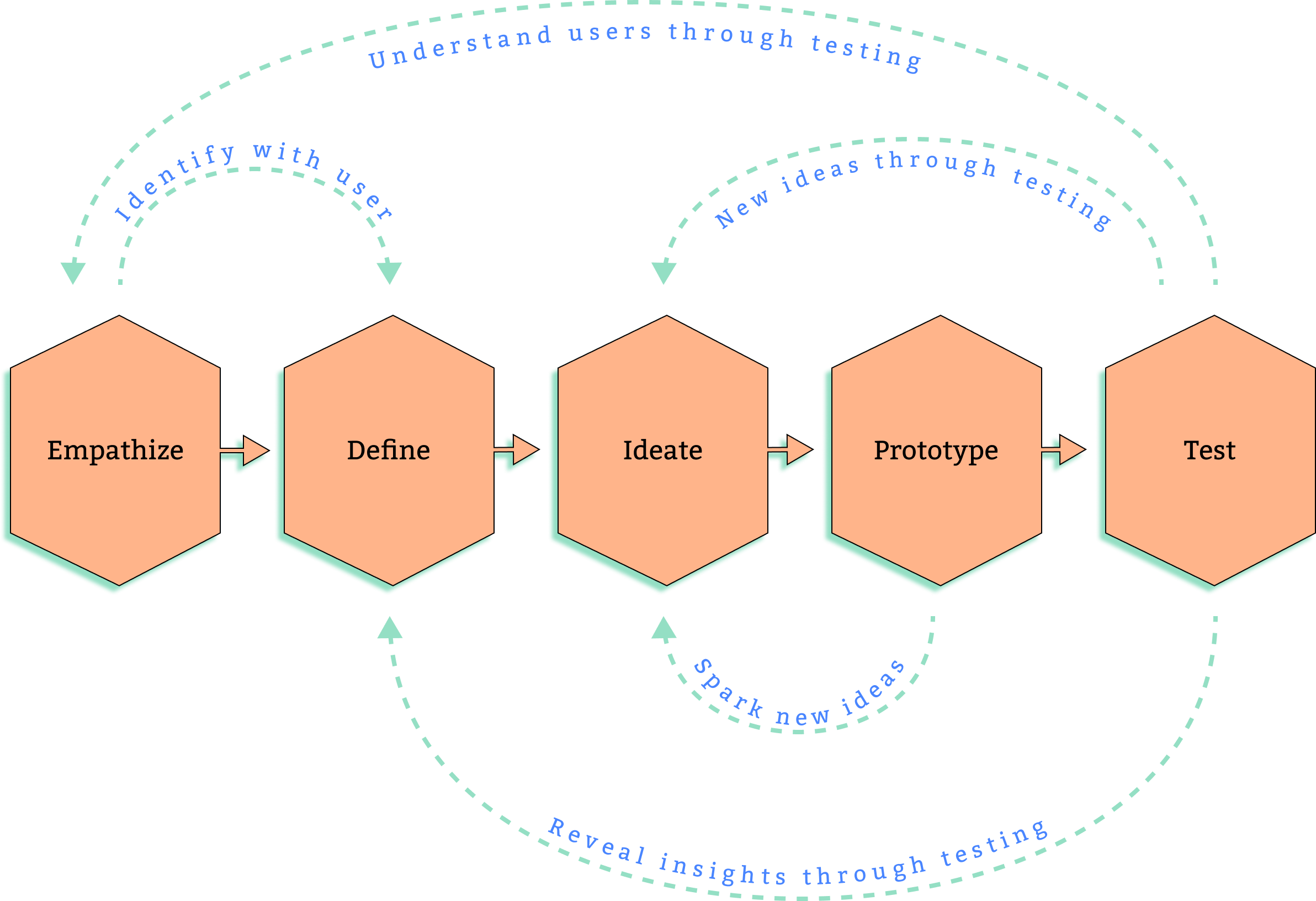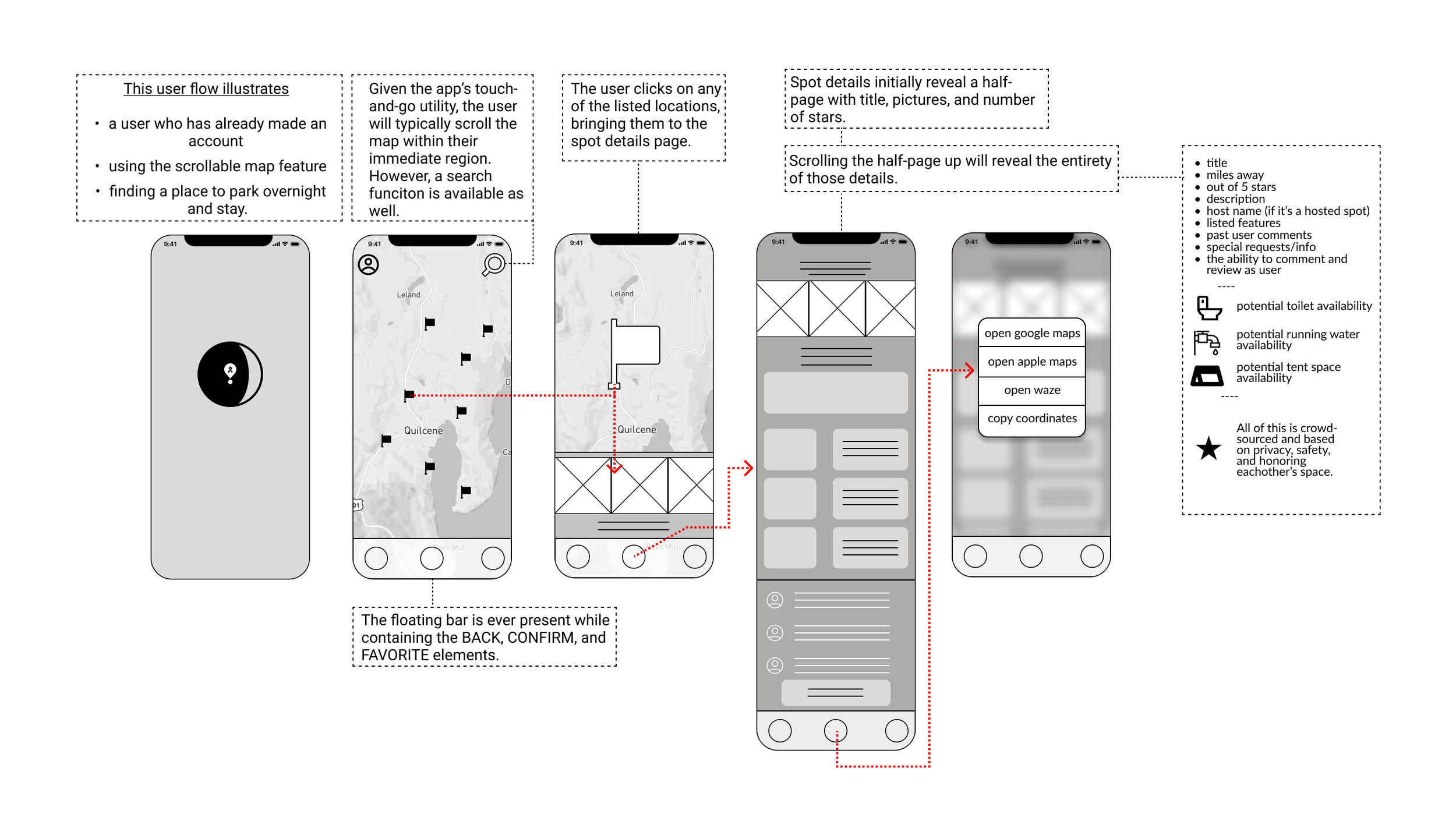
Overnite
Utilitarian solutions for nomadic lifestyles
Academic Project • Fall 2021

Project Overview
While working with a real client and conducting real UX research methods, I built a high-fidelity prototype of a mobile app designed for people on the road. The scope was to design a mobile app that can be used by anyone on the road, anywhere in the world, regulated by community posting/crowd sourcing, and populated with reputable locations both public and user-hosted.
Client
Alyssa Benson is an experienced van-dweller and massage therapist. This means that she has lived full-time out of her as one does a fully-furnished home.
My Role
With Design Thinking as my methodology, I formatted an end-to-end roadmap for every step of the way.
Tools used
The Problem
Generationally, we’ve entered an era where the facet of survival has taken precedence over luxury when traveling. Whether you’re a weekend warrior, an avid road tripper, a seasoned van-lifer, or an individual who is houseless; safe, affordable options, while on the road, are all too limited. With how common nomadic lifestyles are becoming, people need a tool to find designated locations to stay overnight.
The Solution
With distinctive visual hierarchy, clear CTAs, standard accessibility and a modern UI, the user flow stands as an aesthetic unit to serve each and every user.
Intuitive Interaction Design
A user flow designed to naturally lead to tangible results; in this case, a safe place to park, spend some time and recharge.
Public locales
These options are open to anyone on the road and can be accessed anytime.
Hosted locales
These destinations are owned and listed by fellow users, and can be reserved for an allotment of nights.
The Abstract
Persona
Sketching
Crazy 8’s
Solution sketch
Paper wireframes
Storyboard
Flow mapping
Here we can see early iterations of wireframing, a wireflow, a lofi wireframe with user flow descriptions, and a customer journey map.
User survey
An initial user survey with google forms helped me find out how much time individuals were spending/living on the road and the facilities they found to be most crucial. User pain points included a general lack of awareness for local facilities and overnight locations for car-camping.
Data also showed that listed campsites and public parks are the most comfortable spots to park overnight. Being able to see crowd-sourced ratings of each hypothetical spot showed up as a crucial feature along with having the ability rate each spot as a user.
Lofi Testing
Maze.co was used for the first phase of user testing after lofi wireframes had been established. Users were to complete several tasks like finding a location with running water or a toilet. Moving forward was dependent on how challenging these tasks were. The metric for this was the rate of miss-clicks and time spent on each screen.
Hifi Mockup Testing
Miro was used to conduct user interviews as I watched each participant share their screen on Zoom and accomplish tasks within the hifi prototype. It was after this when I began the final iterations.
Iterations
Confirm icon needed to be more apparent.
Lack of a key/legend - "What do the icons mean?"
Filter or filter substitute is necessary for finding the right spot.
Directed user's attention to reduce clicks.
Users expressed a general gratitude and desire for such a tool. Pain points mainly consisted of translating what each icon meant, but these were easy fixes with the tweaking of dominance.
My favorite part
Since it’s typically unrealistic for a single designer to work every step along the scale of Design Thinking ( research all the way to prototyping), I’ll say that hifi mockup design is my favorite part of the process. I especially enjoy this when I can apply design decisions to user insights in order to further translate what the user wants and needs.
Concluding thoughts
What makes my product solution awesome is what lays in its base utility. I want to design a heuristic tool for travelers, nomads, and the individuals who may not have a choice but to live this way. Removing pieces as opposed to adding more pieces has been a veiled aspect of this project's scope, and it only took time to reveal itself. The solution is utility.














